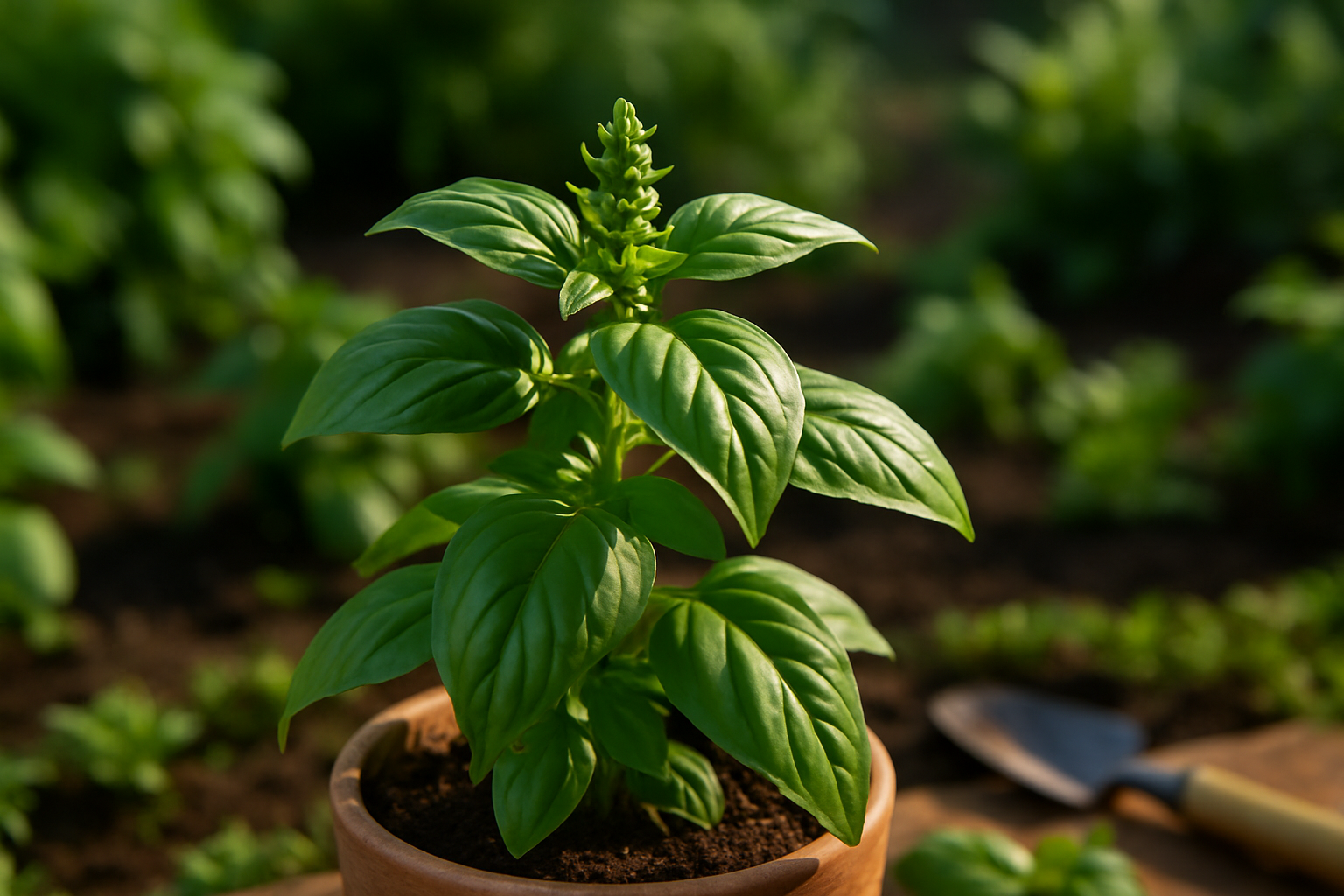Understanding Basil Bolting
Bolting in basil occurs when the plant shifts its focus from producing leaves to producing flowers and seeds. You’ll notice this process as the central stems grow taller quickly, forming clusters of small white or purple flowers at the tips. During bolting, the leaves often become smaller and develop a bitter flavor.
Basil bolts primarily in response to heat, longer daylight hours, and plant maturity—signals that it’s time to reproduce before conditions worsen. For home gardeners and cooks, understanding bolting is important because it marks the end of the plant’s prime period for fresh, flavorful leaves.
If you allow basil to bolt, the leaves lose their characteristic sweet, aromatic taste and become tougher in texture. To prolong your basil harvest, regularly pinch off flower buds as soon as they appear and harvest leaves frequently. This simple habit helps keep your basil bushy, leafy, and delicious, extending its useful life in your kitchen and garden.
Why Does Basil Bolt? Common Causes
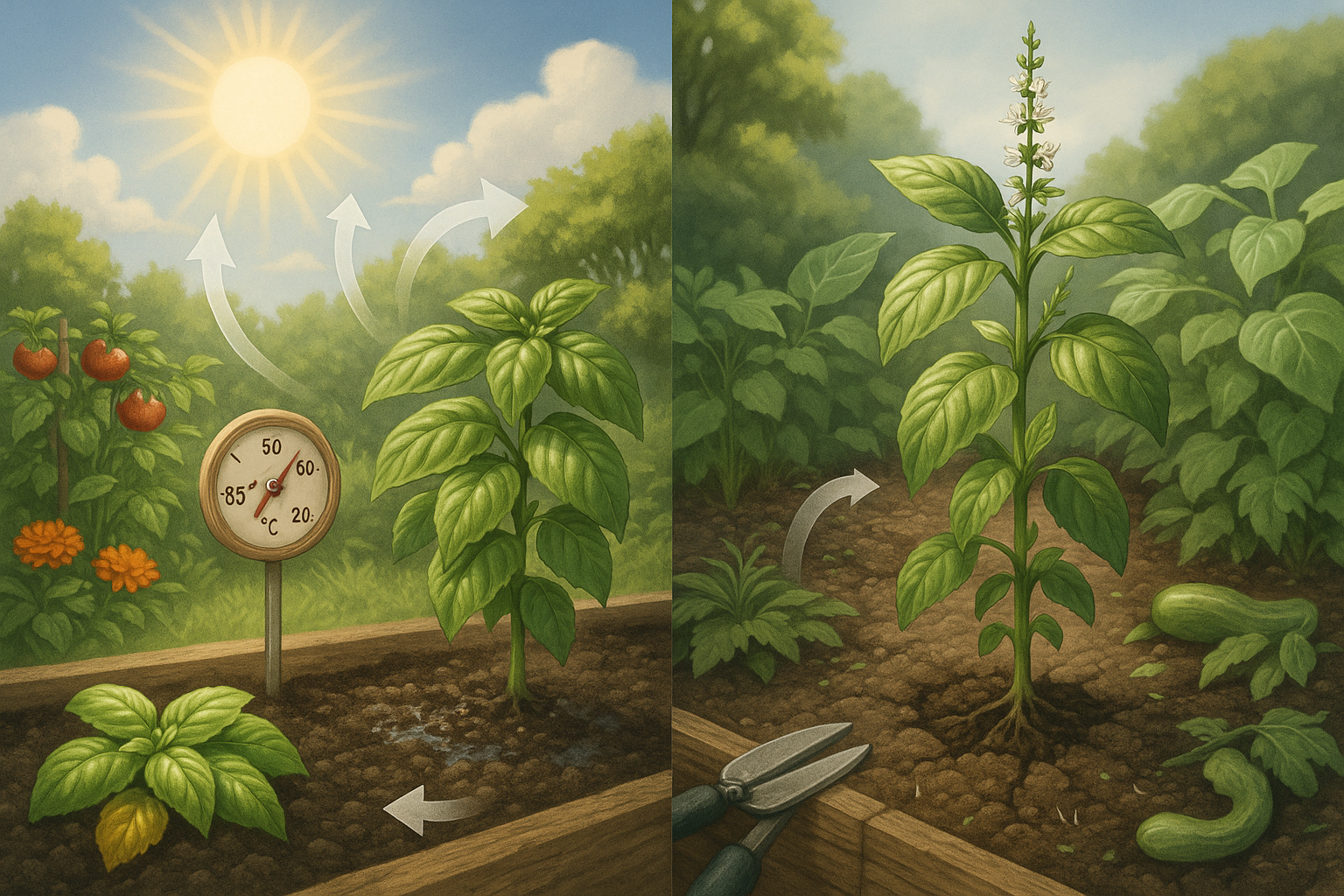
Basil tends to bolt, or quickly produce flowers and seeds, when triggered by certain environmental conditions. One of the most common causes is heat—when summer temperatures rise above 80°F (27°C), basil plants often rush to flower as a survival response.
Longer daylight hours can also signal to basil that it’s time to complete its life cycle, pushing the plant to bolt even faster. Stress from inconsistent watering, poor soil, or overcrowding further encourages early flowering, as the plant tries to reproduce before conditions become unfavorable.
Neglect, such as forgetting to harvest leaves regularly, can speed up bolting since mature leaves cue the plant that its reproductive stage should begin. Likewise, older plants are naturally inclined to bolt as they reach the end of their lifespan, regardless of care.
Even genetics play a role—some basil varieties, like Thai or Purple Basil, tend to bolt earlier than Genovese types. If you’re struggling with bolting, look for slow-to-bolt basil seeds and remember to pick leaves often to keep plants in their vegetative state longer.
By understanding these factors, gardeners can take small but effective steps to delay bolting and enjoy fresh basil for more of the season.
Early Warning Signs
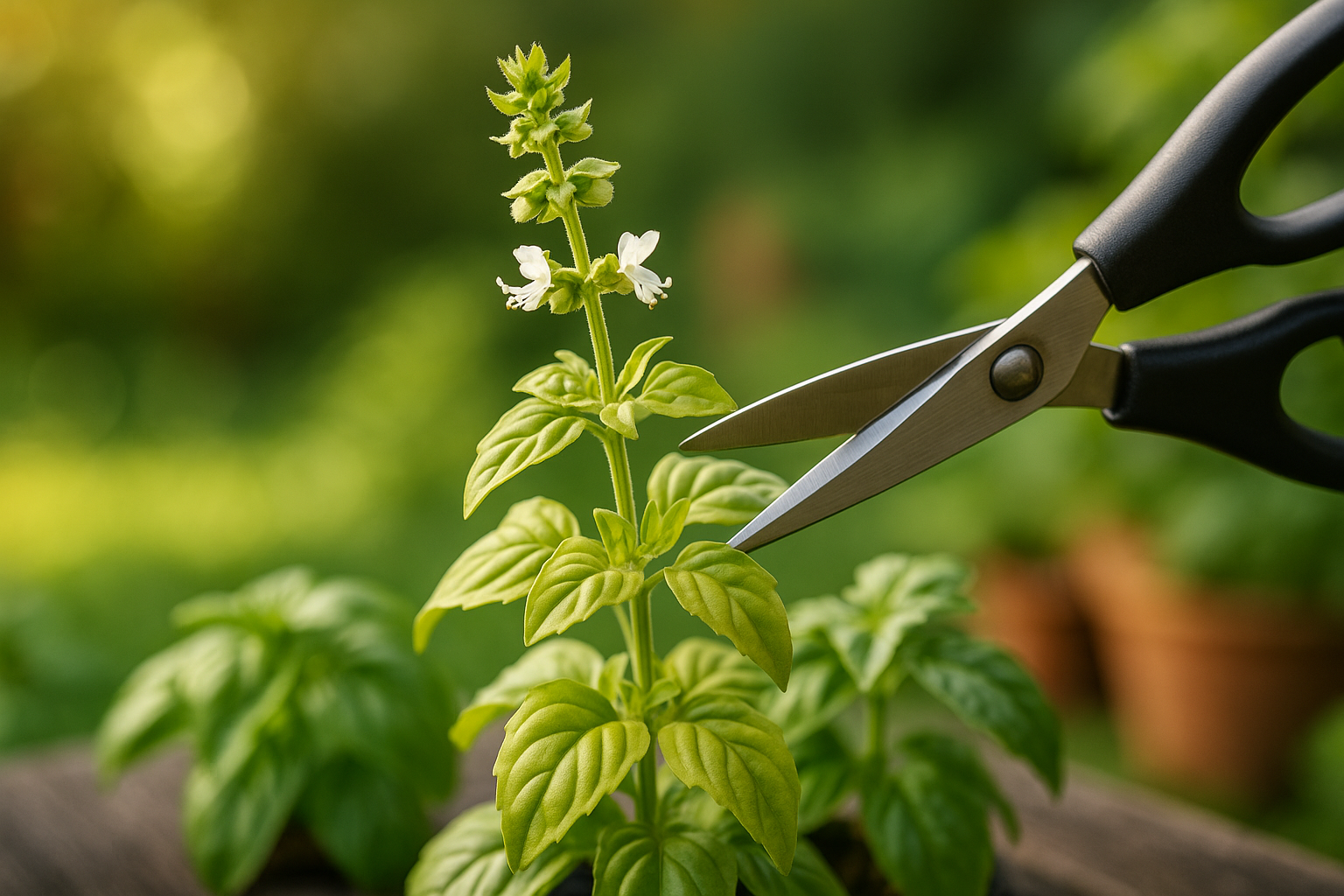
Spotting the early warning signs of bolting can save your garden from losing flavorful greens overnight. Watch for sudden changes in your plants’ growth—when once-compact lettuces or spinach start stretching upward rapidly, they’re likely getting ready to bolt.
The clearest giveaway is the formation of a central flower stalk, often shooting up in the middle almost overnight, even while the lower leaves remain bushy. You’ll also notice leaves changing shape or texture—think arugula or cilantro leaves turning narrower, thicker, or developing a bitter edge. Color may shift from deep green to pale yellow or even reddish hues.
Recognizing these signs early lets you act fast: regular harvesting, providing shade, or increasing watering can delay the process, allowing you to enjoy more harvest before seeds appear. For example, when gardeners spot the first hint of a flower spike on their kale, they might immediately pick outer leaves and mulch around the base to keep roots cool, slowing the rush to seed.
Proven Tips to Prevent Basil from Bolting
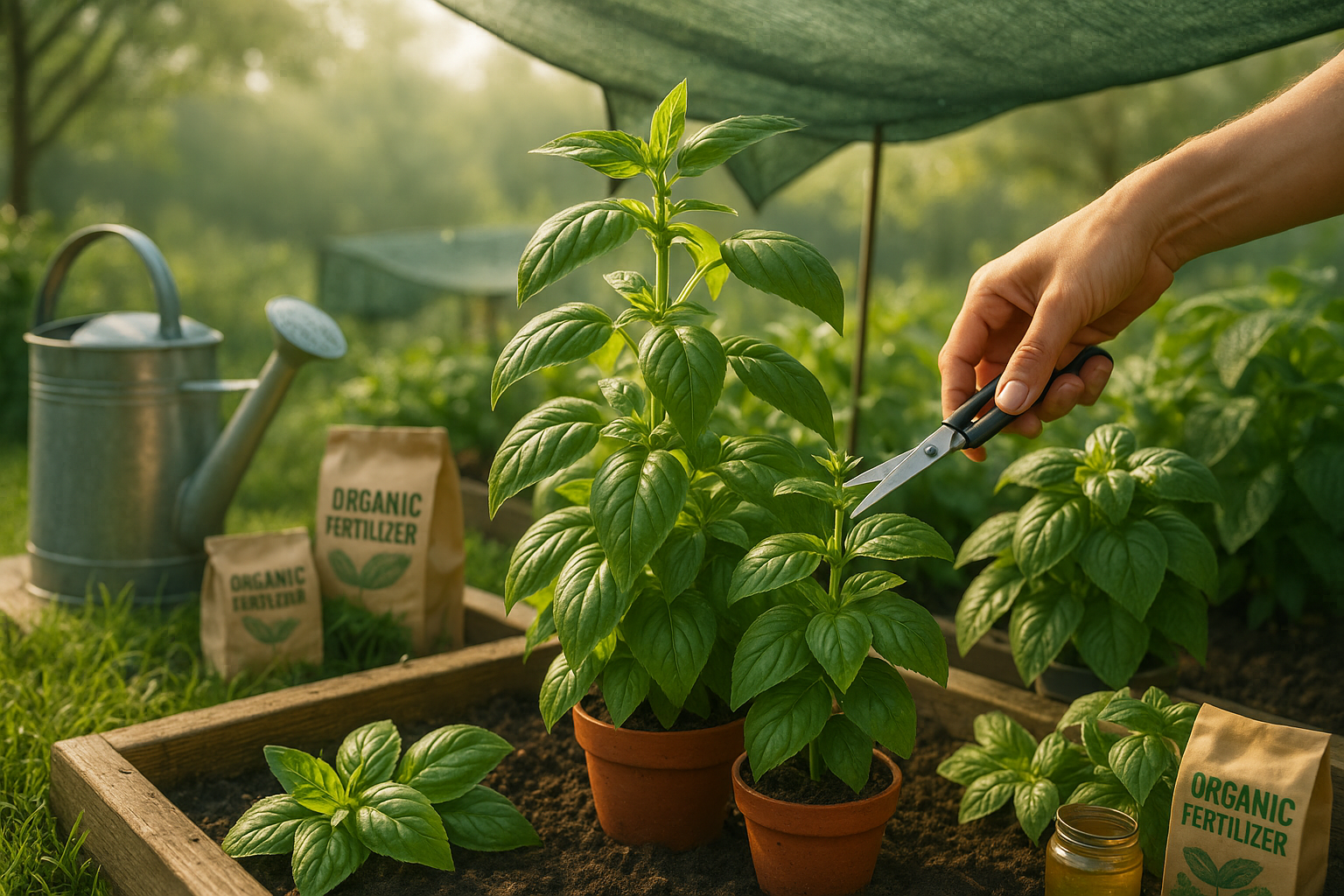
If you’ve ever watched your basil shoot up flowers and turn bitter almost overnight, you’ve witnessed bolting—a common frustration for herb growers. To prevent this, start by making regular trimming and pinching a habit. Snip off the top sets of leaves every week or so, especially once your plant hits six inches tall. This encourages bushier growth and helps delay flowering.
Harvest in the morning when the leaves are packed with oils, and always cut just above a node, which is where two leaves meet the stem—not too close to the base. Consistent watering is just as crucial; basil likes evenly moist (not soggy) soil. Letting it dry out or overwatering can stress your plant and trigger bolting, so use mulch to help retain moisture and check soil daily during hot spells.
Speaking of heat, basil bolts fastest in the scorching sun. When temperatures soar above 85°F (29°C), offer some midday shade by using row covers or even moving potted basil out of direct sunlight. Good soil quality also plays a role; use a rich, well-draining mix and feed every few weeks with a balanced, organic fertilizer. Avoid over-fertilizing with high-nitrogen formulas, as this can promote quick growth and early bolting.
If you’re in an area prone to heat, try bolt-resistant basil varieties like Everleaf Genovese or Amazel Basil, which have been bred to withstand flowering longer than traditional types. By combining proper care and variety selection, you’ll keep your basil lush, flavorful, and bolt-free well into the growing season.
What to Do If Your Basil Has Already Started Bolting
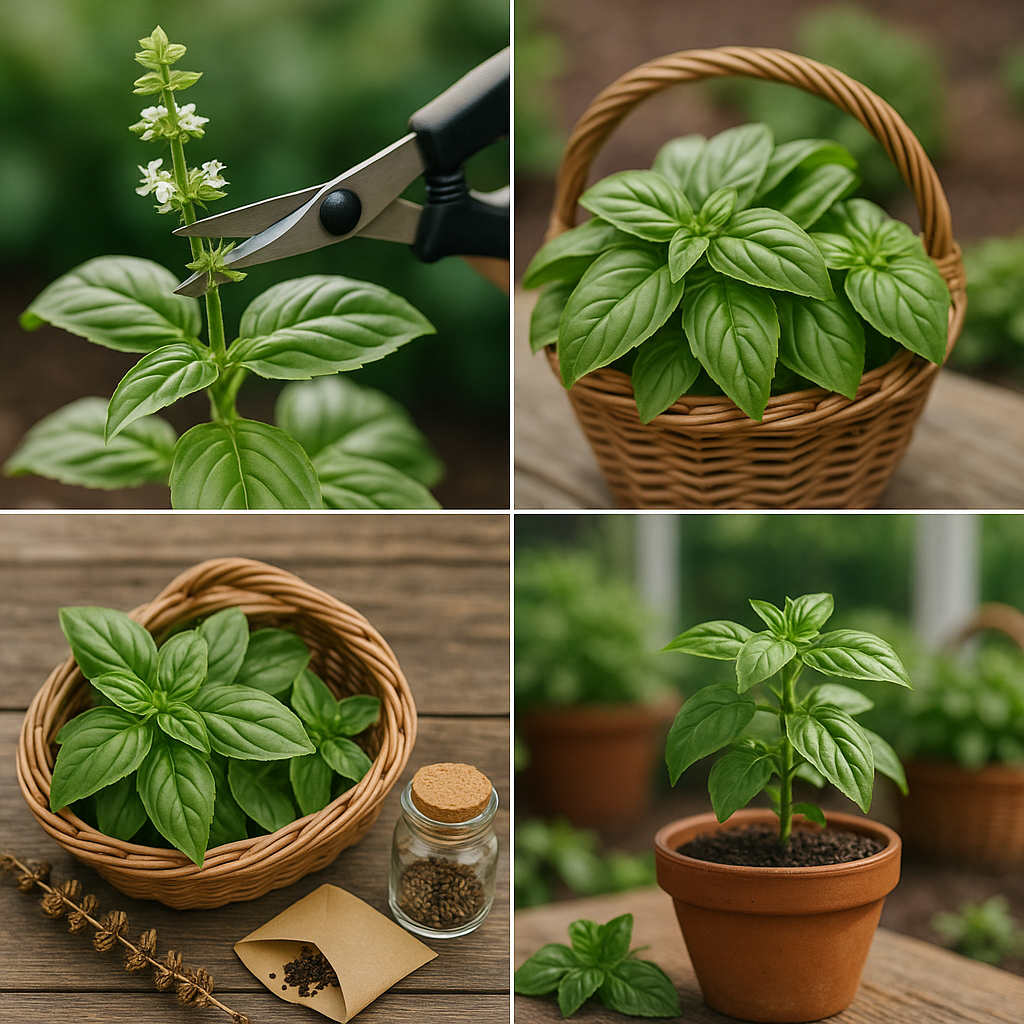
If you’ve noticed your basil sending up flower stalks, it’s a clear sign it’s started bolting, but don’t worry—there are still ways to salvage your plant.
The very first step is to cut off the flower stalks right away; use clean scissors or pruners to snip them as close to the stem as possible. Pair this with aggressive pruning, cutting back up to a third of the foliage. This encourages new leaf growth and may delay further bolting.
Be aware that as basil bolts, the leaves can become more bitter and lose their tender texture. However, you can still use the younger, smaller leaves in recipes for the best flavor.
If you’ve decided to let some flowers mature to collect seeds, leave several flower heads until they dry and turn brown. Then carefully trim and shake the seeds into an envelope or jar for next year’s planting.
Regular pruning and harvesting help keep basil productive, but even bolted plants can offer seeds and some flavor with the right approach.
Frequently Asked Questions on Basil Bolting
Basil bolting, or flowering, is a common concern for gardeners. But can you reverse it? Unfortunately, once basil starts to bolt and produce flowers, you can’t truly reverse the process. However, you can try to slow it down by immediately pinching off any flower buds you see.
Is bolted basil still edible?
Yes—bolted basil leaves are safe to eat, though they may develop a more bitter, less sweet flavor compared to pre-flowering leaves. Many cooks still use the leaves in pesto, salads, or cooked dishes, especially if the leaves are harvested before the flowers are fully open.
Will the plant regrow after bolting?
Basil often becomes woody and less productive after flowering, but regular pruning and pinching may encourage a bit more leafy growth, especially if a few leaves remain. However, it’s best to plant new seeds or transplants if you want a fresh, bushy crop.
In summary, while you can’t fully undo bolting, you can slow it, safely eat the leaves, and sometimes coax limited new growth with quick trimming.
Quick Recap
To keep your basil bushy and productive, frequently pinch off the tops of stems to encourage branching, and remove any flower buds as soon as they appear. Make sure your basil gets at least six hours of sunlight each day, and water it at the base, avoiding wetting the leaves.
Check your plants regularly for pests or signs of disease, and harvest leaves often to promote new growth. Consistent care and a watchful eye will help your basil thrive.
With just a little daily attention, you’ll enjoy a lush supply of fresh basil all season long for your favorite dishes.
